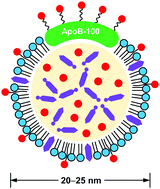Biomimetics: reconstitution of low-density lipoprotein for targeted drug delivery and related theranostic applications
Abstract
Low-density lipoprotein (LDL), one of the four major groups of lipoproteins for lipid transport in vivo, is emerging as an attractive carrier for the targeted delivery of theranostic agents. In contrast to the synthetic systems, LDL particles are intrinsically biocompatible and biodegradable, together with reduced immunogenicity and natural capabilities to target cancerous cells and to escape from the recognition and elimination by the reticuloendothelial system. Enticed by these attributes, a number of strategies have been developed for reconstituting LDL particles, including conjugation to the apolipoprotein, insertion into the phospholipid layer, and loading into the core. Here we present a tutorial review on the development of reconstituted LDL (rLDL) particles for theranostic applications. We start with a brief introduction to LDL and LDL receptor, as well as the advantages of using rLDL particles as a natural and versatile platform for the targeted delivery of theranostic agents. After a discussion of commonly used strategies for the reconstitution of LDL, we highlight the applications of rLDL particles in the staging of disease progression, treatment of lesioned tissues, and delivery of photosensitizers for photodynamic cancer therapy. We finish this review with a perspective on the remaining challenges and future directions.



 Please wait while we load your content...
Please wait while we load your content...